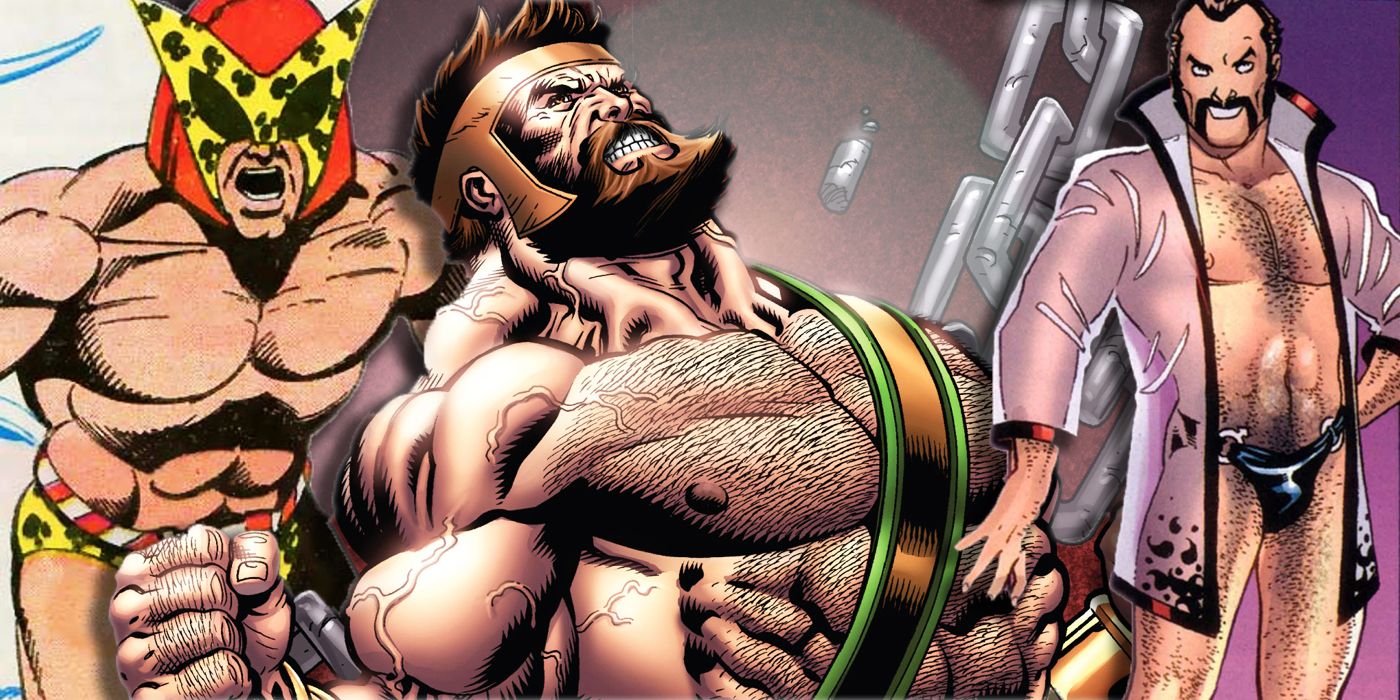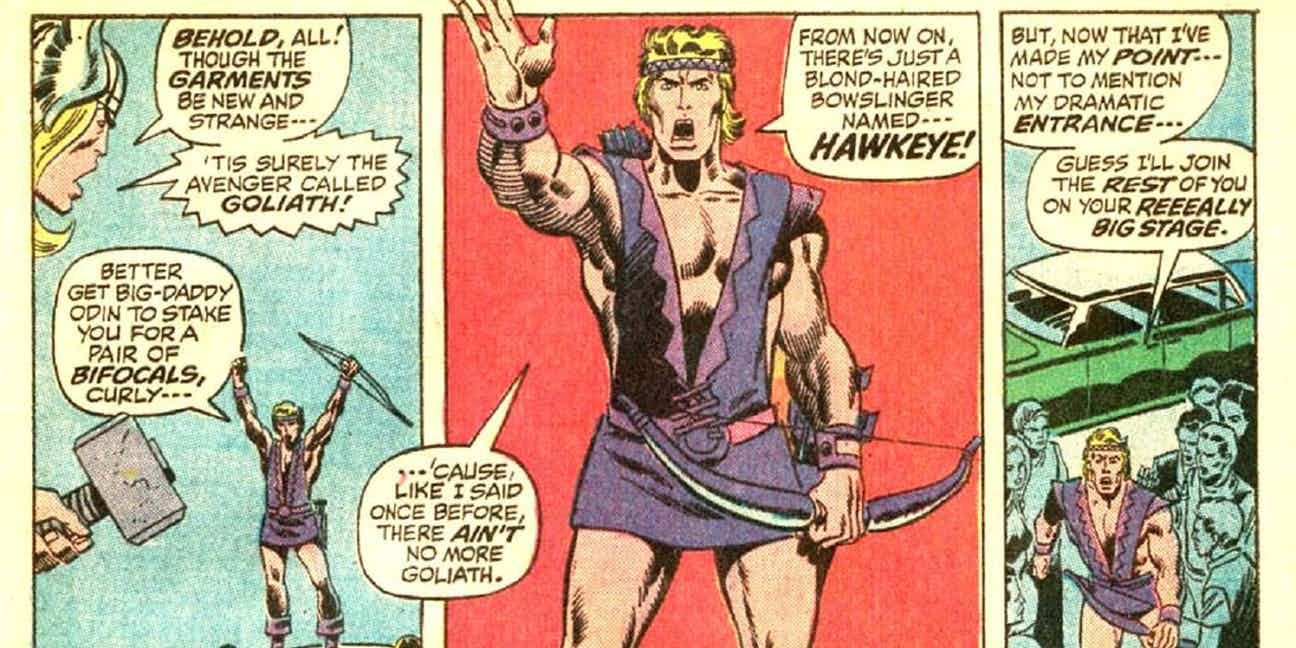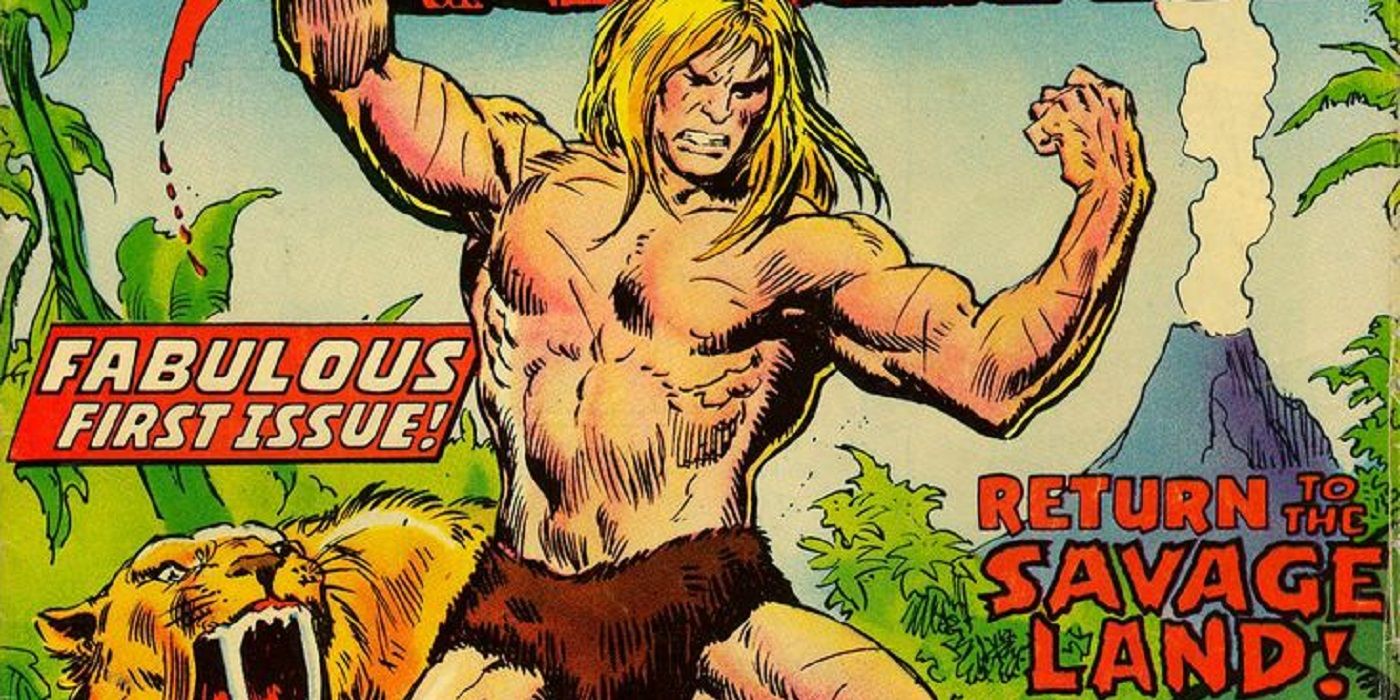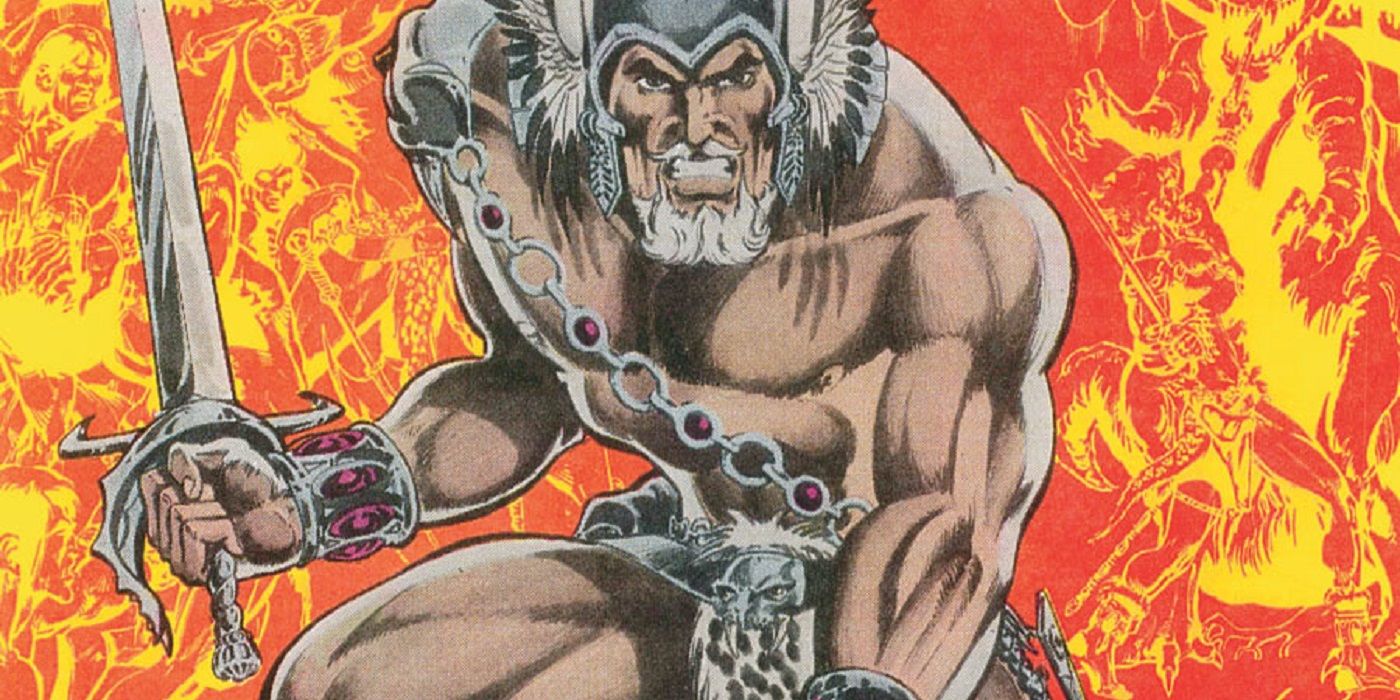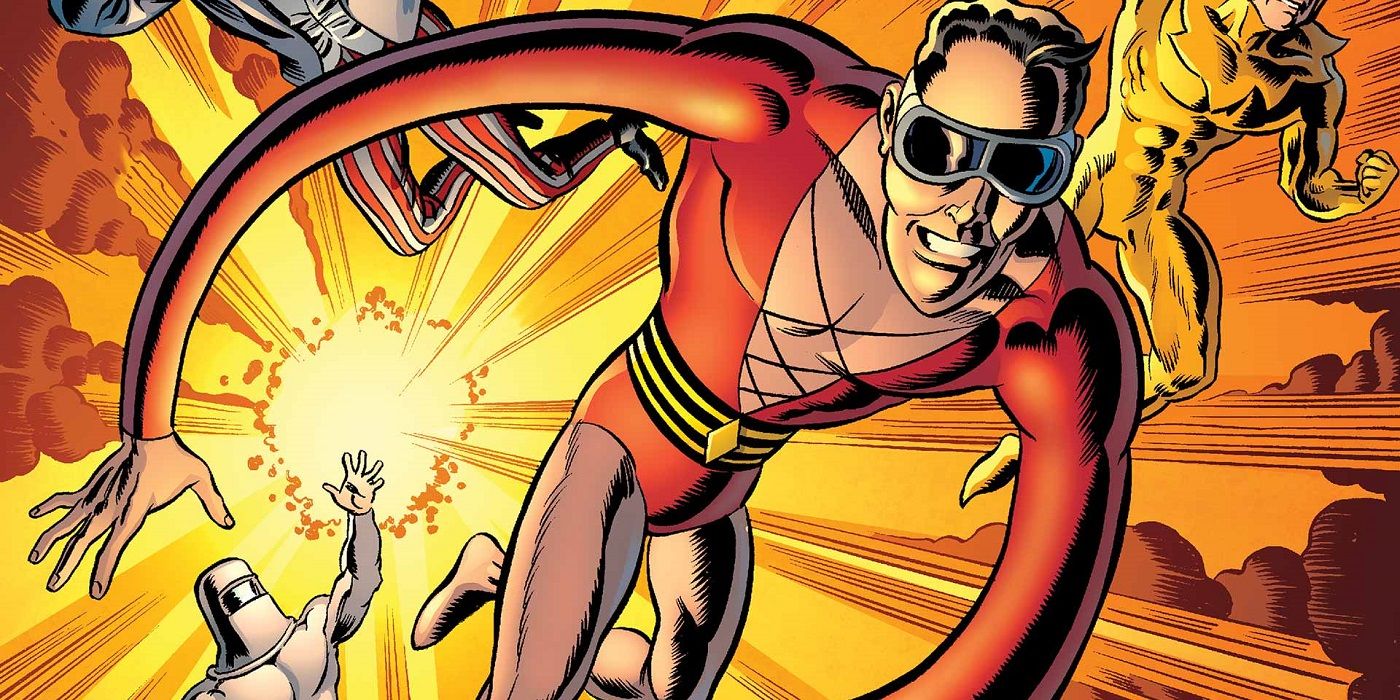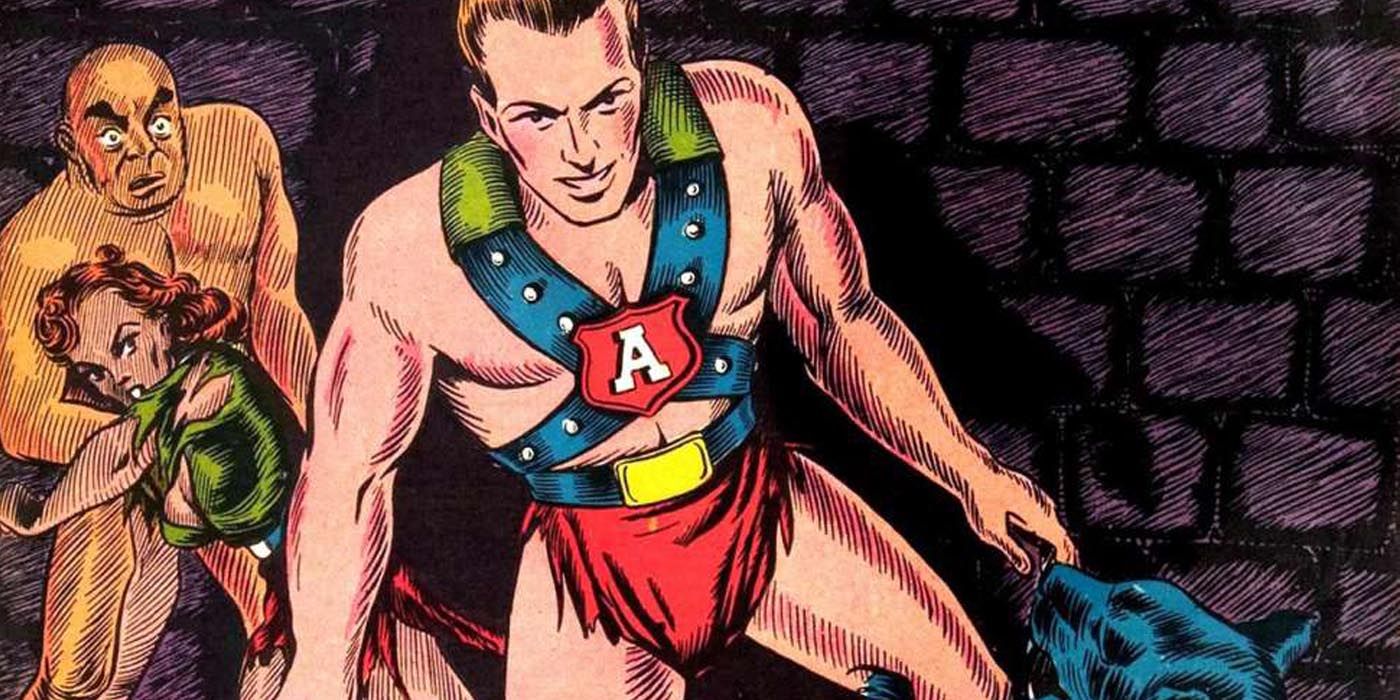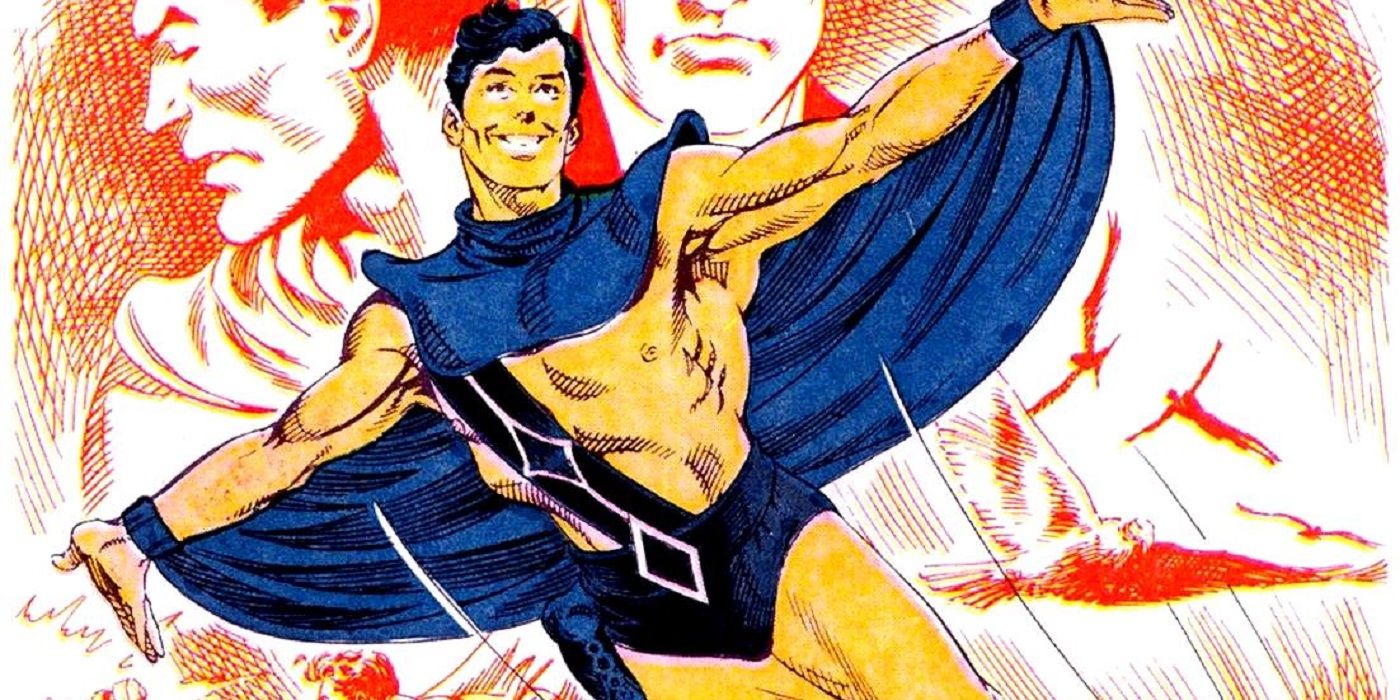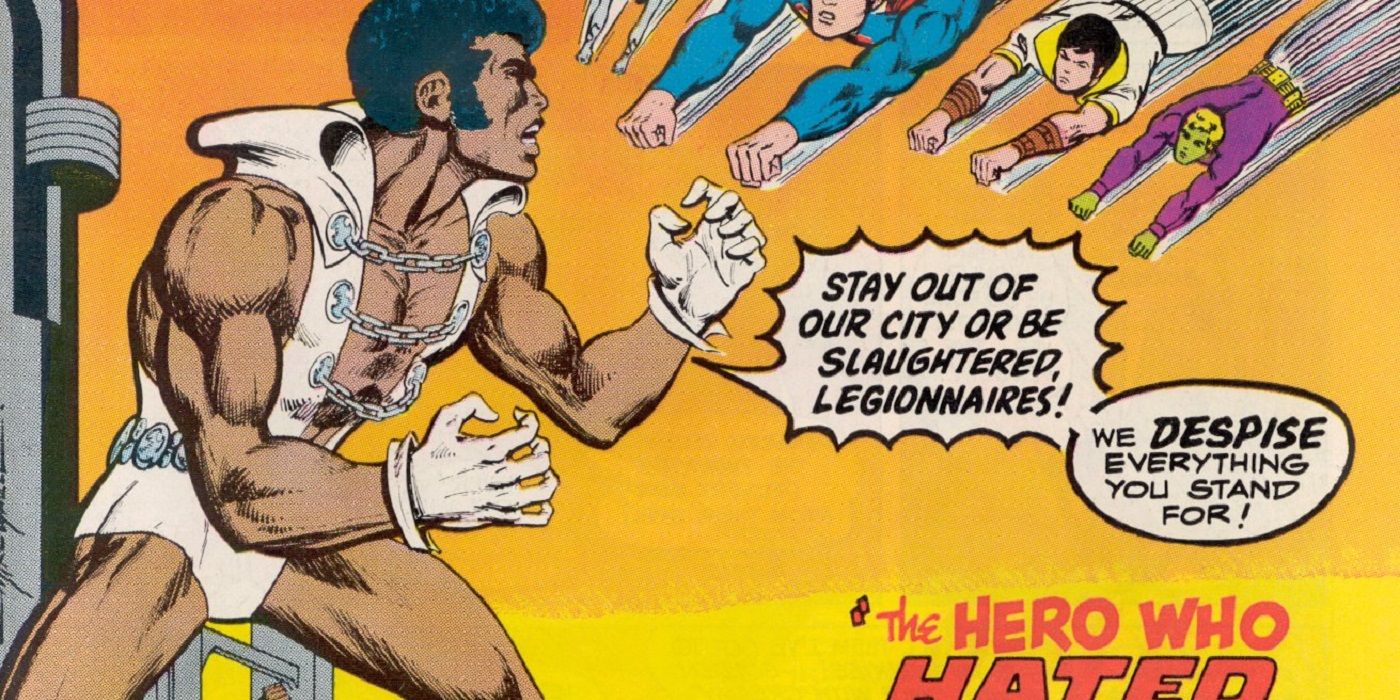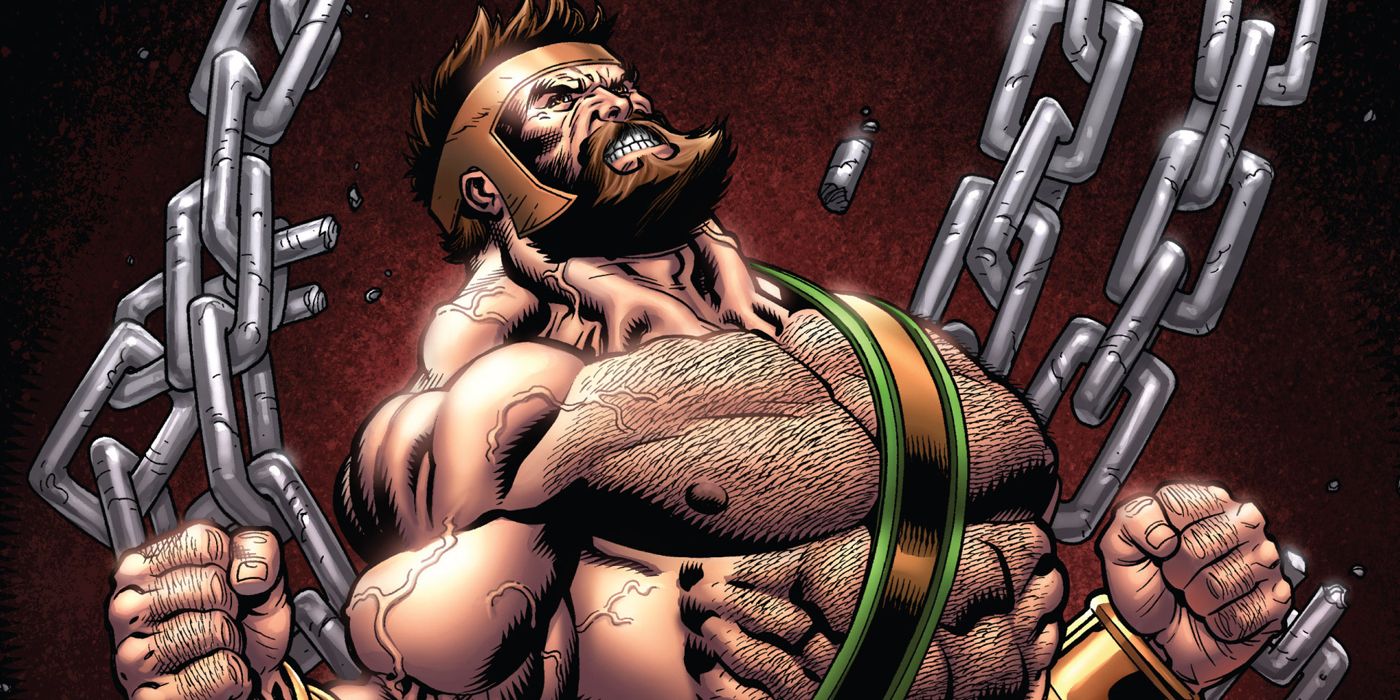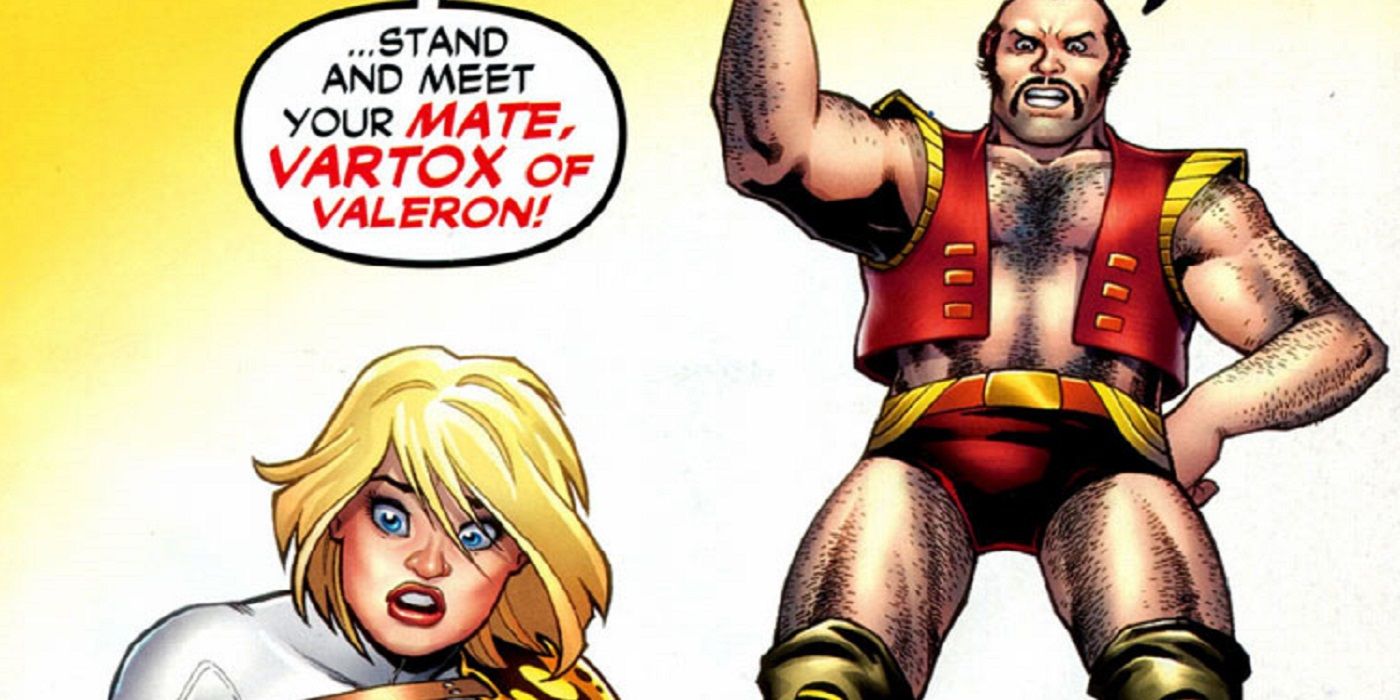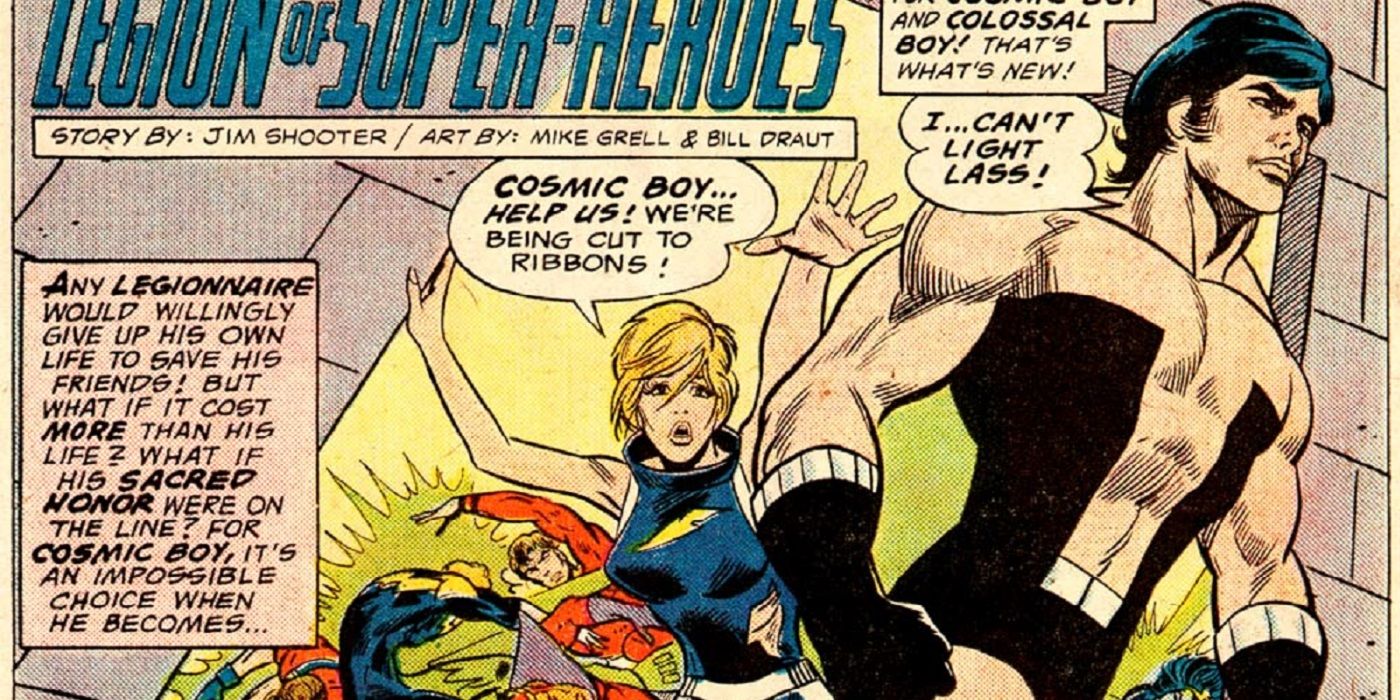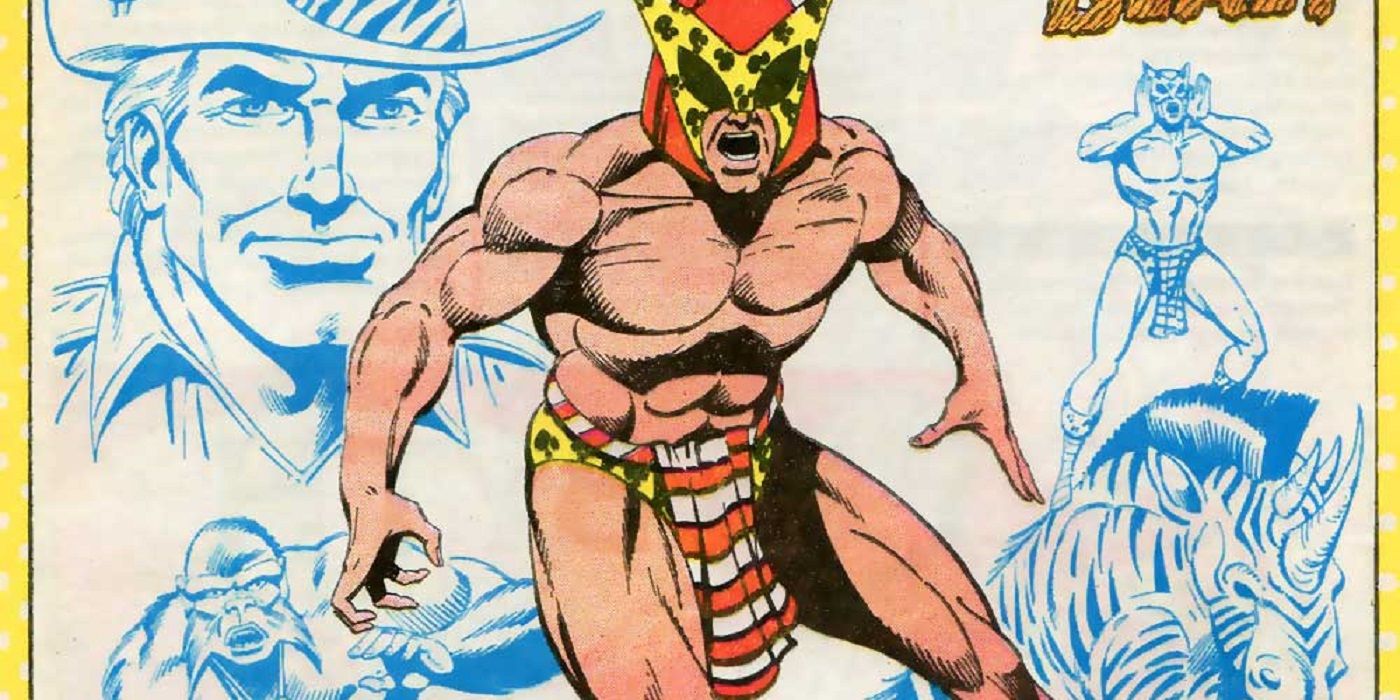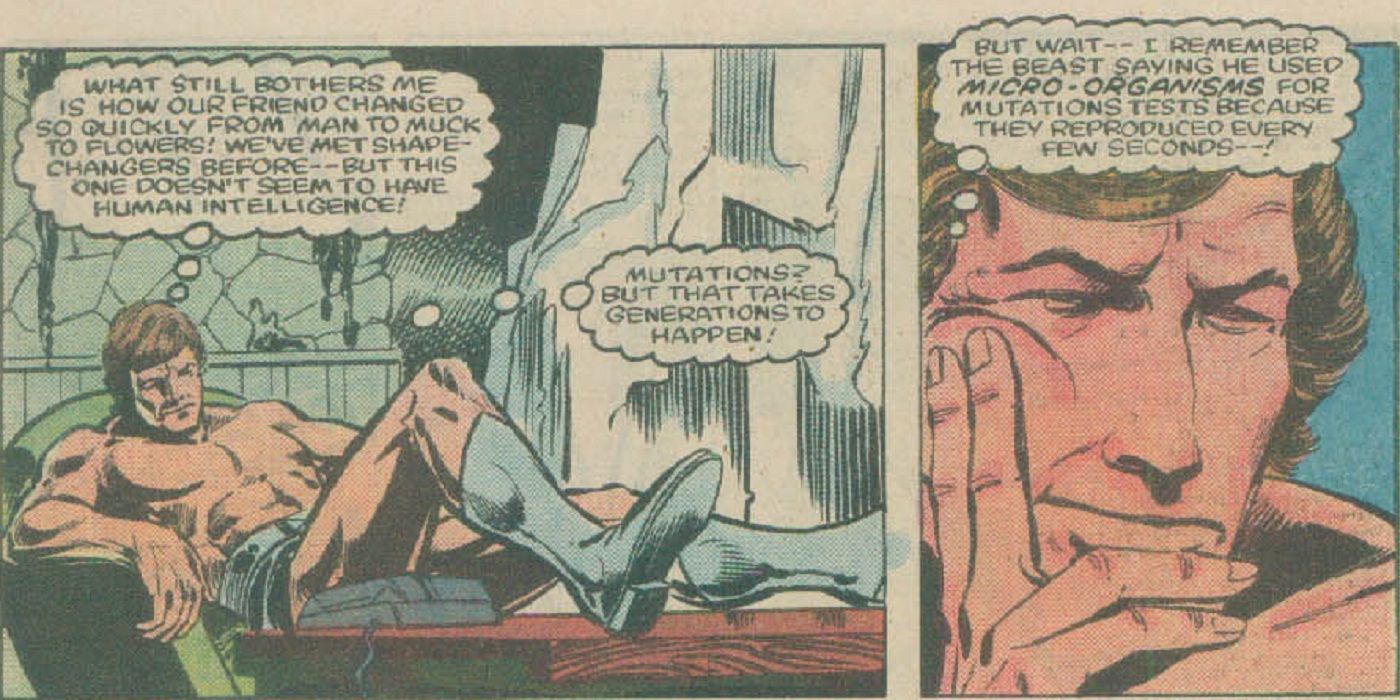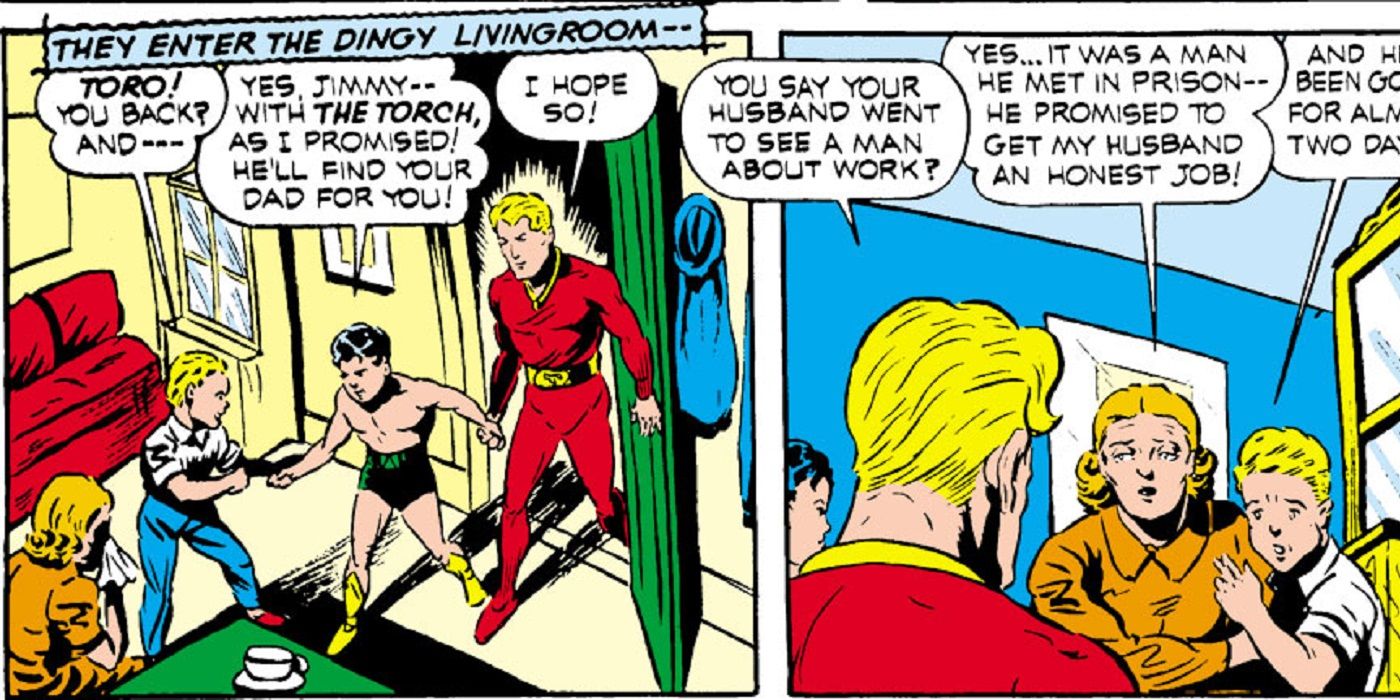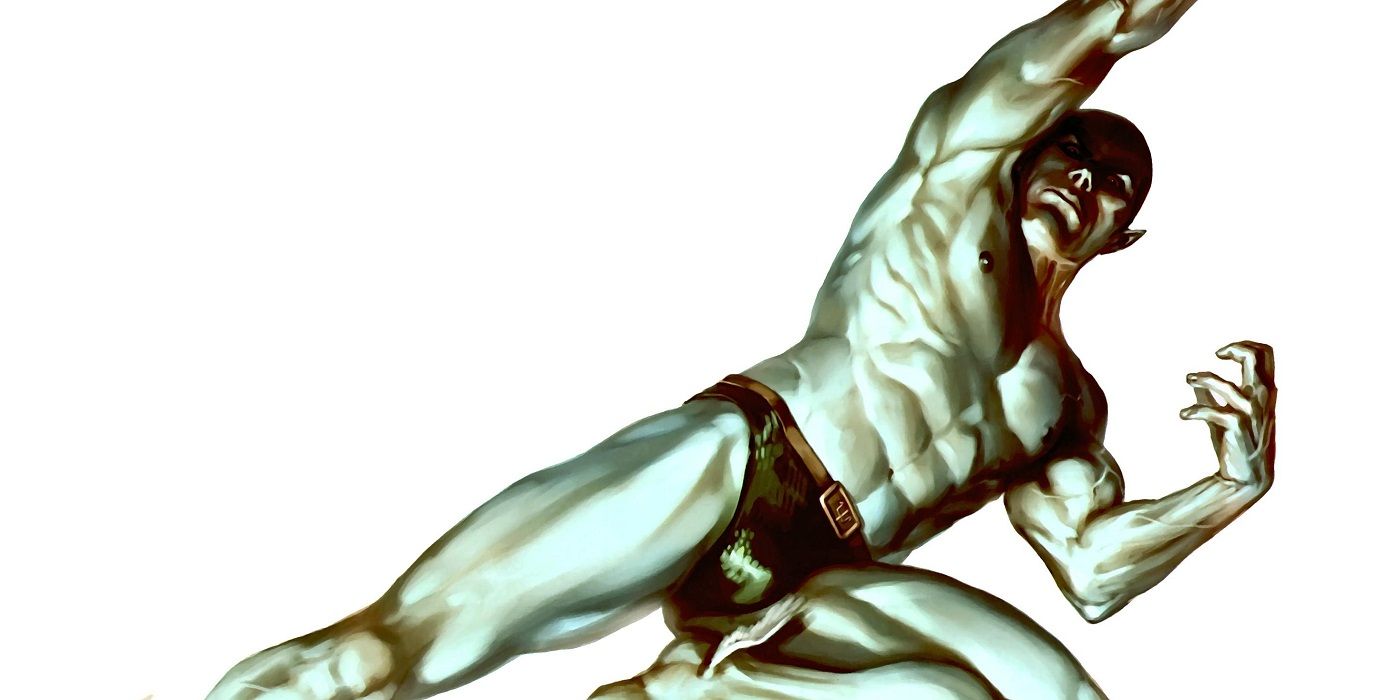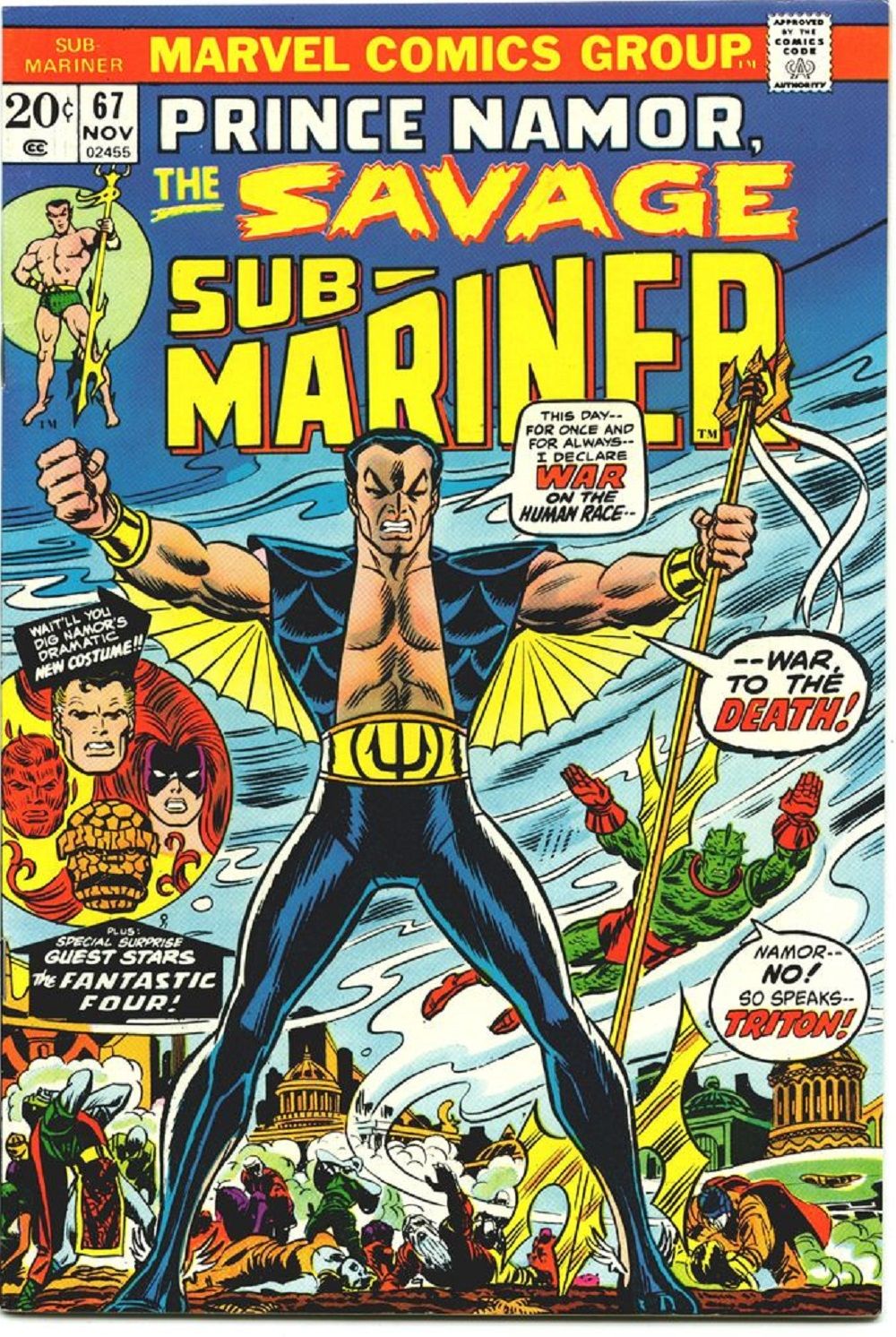The world of comic book superhero costumes is filled with examples of female superheroes wearing scantily clad costumes. Of course, it's not just that they wear skimpy outfits, it's also that they are drawn in bizarre poses designed to accentuate their body even if an actual woman would break her back getting into those poses. However, male superheroes in general wear much more modest costumes than their female counterparts. That, though, is not always the case.
RELATED: Cheesecake Factory: The Most SCANDALOUS Comic Art Of All Time
Here are the most scantily-clad male superhero costumes. Note that we're only counting superheroes who appear generally like humans. For instance, the Thing and the Beast technically don't wear much clothing, but they're also made out of rocks and covered with fur, respectively. It's not the same thing. That's more like Donald Duck not wearing pants. It just isn't comparable to a person with a human appearance not wearing pants.
15 HAWKEYE
After Hank Pym gave up his growth power and became the hero known as Yellowjacket, that power set was just lying around for anyone to take. Eventually, Hawkeye decided to trade in his bows and arrows for the ability to grow, becoming the new Goliath for a number of years. Hawkeye's Goliath outfit was relatively skimpy on its own, with its half-shirt look.
However, after using up the last of his growth powers during the "Kree-Skrull War," Hawkeye abandoned his Goliath identity and returned to his archery ways in Avengers #99 (by Roy Thomas and Barry Windsor-Smith). After landing back on Earth, Hawkeye ended up in a traveling circus, which is where he adopted his skimpy new costume, which seemed to barely cover up his downstairs area.
14 KA-ZAR
Ka-Zar marked one of the few instances where Marvel Comics (then Timely Comics) actually worked in concert with Martin Goodman's pulp magazine business (which, at the time, was his main business). Ka-Zar was a pulp magazine written by Bob Byrd that starred David Rand, a knock-off of Tarzan named Ka-Zar. The pulp magazine story was then serialized in a comic book series by Timely during the 1940s.
Decades later, when the Marvel Age of Comics had begun, a new version of Ka-Zar debuted, now named Kevin Plunder, but still basically a riff on Tarzan (the special relationship between the Timely comics and pulps is the only reason we're counting Ka-Zar as a comic character and not Conan and Tarzan), right down to his furry, revealing loincloth outfit.
13 WARLORD
During the Vietnam War, Mike Grell served in Asia as a member of the United States Air Force. He then broke into comic art in the early 1970s, eventually going to work for DC Comics where he became one of their most popular artists. His popularity opened up opportunities for him to try writing comics as well, and in 1975 he introduced a brand-new sword and sorcery character named Warlord.
Loosely based on Grell (including Grell's goateed look at the time), Travis Morgan was an Air Force pilot who ended up in an underground world called Skartaris while flying over the North Pole. In this new world, Morgan's pilot outfit was far too much clothing, so as he remade himself as the Warlord, he began wearing an ornate helmet and not a whole lot more than that.
12 PLASTIC MAN
Eel O'Brien was a member of a group of crooks who robbed a chemical plant. During the robbery, Eel was shot and then a vat of acid fell upon him. His cohorts left him behind as they made their getaway. O'Brien tried to get away but eventually collapsed due to his injuries. He seemed destined to be caught and sent to the hospital on the way to prison. Instead, a monk found him and nursed him back to health.
Someone doing something nice for him caused O'Brien to turn over a new leaf. He also discovered that the acid had given him super powers. He decided to take down his former partners as Plastic Man! However, to do so, he decided to don one of the stranger costumes you'll ever see, a sewn-up one-piece corset-looking thing without any pants. It does show off his stretching abilities very well, though, we suppose.
11 AMAZING MAN
In the early days of comic book superheroes, the division of characters was generally a lot different than what we think of today. The characters were produced by a studio who would then sell the characters to different companies. Creators would work for the packaging studio, not the companies. Before the first packaging studio, Funnies, Inc., formed, though, one of their future artists, Bill Everett, was working directly for Centaur Publishing.
While there, Everett created John Aman, the Amazing Man, in 1939, a direct forebear to the popular Marvel hero, Iron Fist (a boy raised in Tibet to be a master martial artist and then sent back to the United States to use his abilities to fight crime). The character did not wear a lot of clothes, apart from his chest belt and fetching loin cloth combo. Amazing indeed!
10 BLACK CONDOR
One of the all-time strangest comic book superhero origins was that of the original Black Condor, who debuted in Crack Comics #1 (created by comic greats Will Eisner and Lou Fine). Richard Grey Jr. was traveling through Mongolia with his family when his parents were murdered in front of his eyes. He was rescued by a condor, who then raised Richard as one of its family. As part of this upbringing, Richard was taught how to fly because, you know, that's something that can somehow be taught.
When he became an adult, Richard rejoined human society, taking the place of a murdered Senator who was conveniently Richard's exact double. He then began to fight crime as the Black Condor. The condors who raised him naturally didn't wear a whole lot of clothes, so Black Condor's superhero costume was low on fabric.
9 TYROC
By the mid 1970s, comic book readers had long begun to wonder exactly why was it that there were no black people living in the idyllic future world of the Legion of Super-Heroes. Artist Mike Grell began to try to address this by sprinkling black characters into his stories, but his editor told him to hold off, as they had an incoming story that would address the issue.
That story turned out to be that all of the black people in the future lived on a magical island city. One of the members of the island, Tyroc, would then join the Legion. Grell found the story of segregation offensive, and in protest, he gave Tyroc a ridiculous costume, something Grell described as, "somewhere between Elvis' Las Vegas costume and something you would imagine a pimp on the street corner wearing."
8 HERCULES
In 1957, a bodybuilder named Steve Reeves traveled to Italy to appear in a film based on the adventures of Jason and the Argonauts, only with Hercules in place of Jason. The film, called Hercules, was a massive international success and Reeves spent the rest of the decade (and much of the 1960s) starring in so-called "sword and sandal" films, movies about Greek myths or Biblical epics. Reeves' outfits made sure to show off as much of his body as possible.
In 1965, Stan Lee and Jack Kirby brought the character of Hercules to the pages of Marvel Comics in their Thor series. Soon after, he was added to the Avengers, where artist John Buscema really leaned in with a Reeves-esque depiction, but Kirby's original version also rocked the loin cloth look, as well.
7 VARTOX
Longtime Superman writer Cary Bates would often have some fun with the job, as he introduced a number of pastiche characters in his day, like Captain Strong, who was a loosely veiled version of Popeye. Another famous pastiche character created by Bates was the alien Vartox, introduced in 1974's Superman #281 by Bates and artist Curt Swan. Vartox was a thinly-veiled version of Sean Connery's alien character from the then-new film, Zardoz.
Vartox wore barely any clothes, just like Connery as Zardoz. Vartox ended up becoming a lot more than just a riff on a film character, as he became one of Superman's recurring allies throughout the rest of the 1970s. In recent years, he was brought back as a foe/ally of Power Girl, with artist Amanda Conner fully embracing the absurdity of his costume.
6 COSMIC BOY
When Mike Grell took over art duties on Legion of Super-Heroes, he was following in the footsteps of one of the greatest costume designers in superhero history, Dave Cockrum (who moved on to Marvel, where he designed all of the stunning costumes of the All-New, All-Different X-Men, many of which are still their costumes to this day, 40 plus years later!). Grell wanted to make his own mark following in Cockrum's footsteps, and so Grell set out to revamp the remaining Legionnaires that Cockrum hadn't already provided with new costumes.
Cosmic Boy hadn't gotten a new costume in over a decade, so Grell came up with a bold new idea, based on the premise that fashion in the future would be a lot different looking. However, Cosmic Boy just wearing a bustier for no reason was just a bizarre idea that did not last very long as a design.
5 B'WANA BEAST
After its early heyday of introducing both the Barry Allen version of the Flash and the Hal Jordan version of Green Lantern, DC's try-out series, Showcase, went through a bit of a lull towards the end of the 1960s. One of the heroes that did not catch on was B'Wana Beast, who debuted in 1967's Showcase #66 (by Bob Haney and Mike Sekowsky).
Mike Maxwell was a college student who befriended a student from Africa. When they graduated and his friend returned to Africa to be with his people, he offered to bring Maxwell along to become a game warden. Maxwell agreed, but soon after they arrived back in Africa, their plane crashed and they ended up in a cave where Maxwell gained superpowers as B'Wana Beast. He could control animals and even merge them together to form super-animals! His fashion sense was a little less well-matched, as his costume was just a fancy helmet and a loincloth.
4 ICEMAN
The youngest member of the X-Men, Iceman's costume was a strange aspect of the series because we rarely, if ever, saw him actually in his costume! In the earliest issues, despite his name being Iceman, he looked like a Snowman. He later took on his more familiar solid ice appearance. However, those looks were just when his powers had kicked in. When his powers were turned off, he was just wearing boots and underwear. We just never really saw him in the boots and underwear since he was always in ice form!
When he joined the Champions in the mid-1970s, he got his first full-body costume, but he then went back to underwear and boots in the 1980s when he joined the Defenders. When he joined X-Factor later on in the decade, he adopted a version of his Champions costume and that's been his look ever since.
3 TORO
One of the oddest superhero costumes of all-time has got to be Toro, the sidekick to the original Human Torch. He debuted in the first issue of the Human Torch's solo series, Human Torch Comics #2. Back then, it cost money every time you launched a new series, so comics often just picked up the numbering of other books -- in this case, Red Raven #1 then became Human Torch Comics #2.
Toro was introduced as a circus performer who the Torch meets and trains in his mutant ability to turn into flames naturally the same way that the android Torch could do through artificial means. The odd thing is that the android Human Torch wore a full body suit, while his young human sidekick just ran around in his underwear while his flames were out! It didn't make any sense!
2 SAMSON
As noted earlier, in the early days of superhero comics, most comic book companies just bought work from comic book "packaging" studios. However, as time went by, the companies realized that the model used by National Comics (now DC Comics) was more cost-efficient, which was to bring the creators from the studios on as employees to eliminate the middle man on the production of the comics.
That's what Fox Feature Syndicate eventually did, but early on, they used the Will Eisner-Jerry Iger packaging studio, and that studio (through Eisner and artist Alex Blum) created the Biblical superhero, Samson. As you might expect, Samson wore just a loin cloth and had super strength, just like the Biblical Samson (he had a sidekick named David, a la "David and Goliath"). Cutting his hair was his weakness.
1 NAMOR
As mentioned in the Amazing Man entry, Bill Everett went to go work for Funnies, Inc., the biggest comic book packaging studio around. One of their earliest assignments was to produce work for Martin Goodman's new comic book company, Timely Comics. In Marvel Comics #1, Carl Burgos invented the Human Torch and Bill Everett re-used a story he had created earlier for a different project, Namor the Sub-Mariner.
Following in the footsteps of Amazing Man, Namor wore even less clothing than Amazing Man, rocking pretty much just a speedo bathing suit during the Golden Age. When Marvel later revived the character in the 1960s, they eventually gave him a costume that covered him up more, but even that winged outfit still couldn't help but show a little bit of skin.
What do you think is the best skimpy male superhero costume? Let us know in the comments section!

